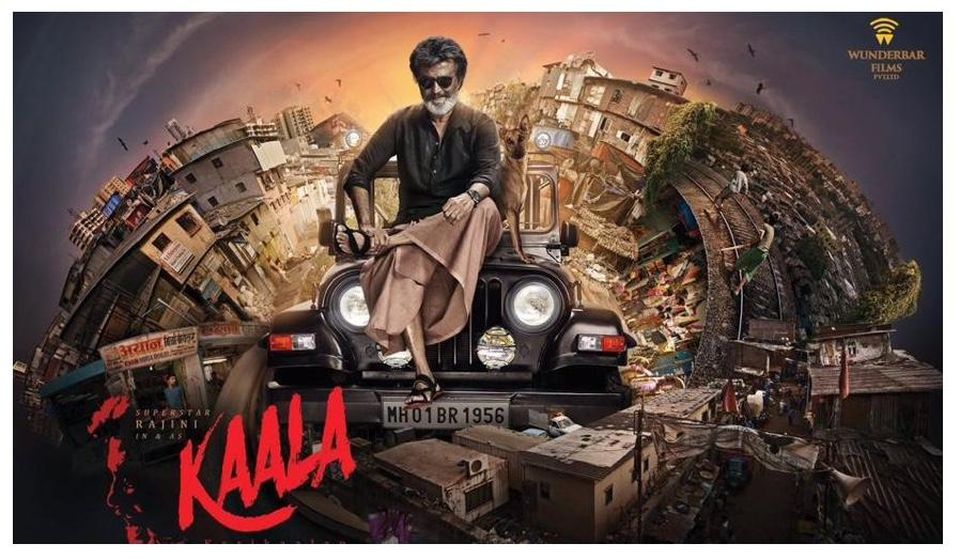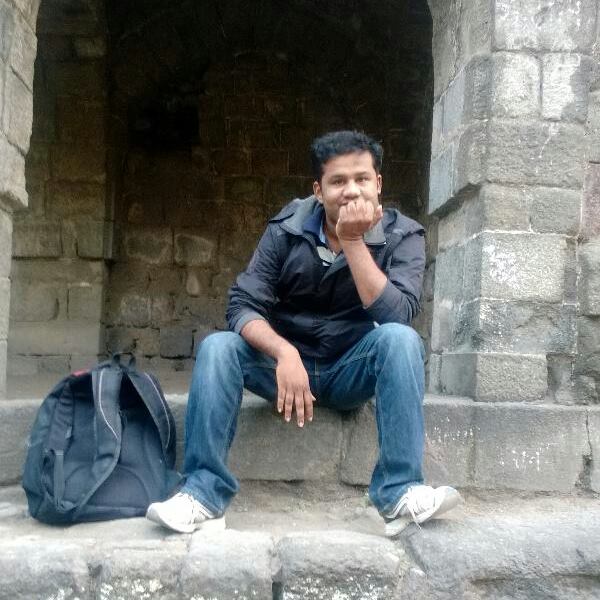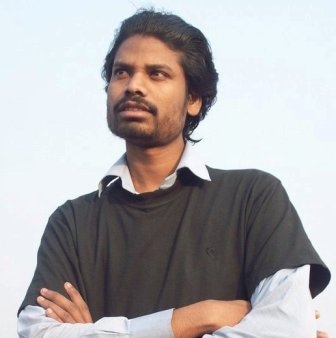N Sukumar & Shailaja Menon
The usual template in many a ‘mainstream’ Indian film in any language is similar. The standard star-crossed heterosexual lovers, dance around the trees in sylvan surroundings, facing family opposition, the stern patriarch, the simpering and cowering females and finally the great Indian wedding. The sole criterion is entering the 100 crore club at the box office on the day of release. In the process, prejudiced ideas about caste, gender, religious and regional identities are peddled unabashedly all in the name of the ‘public choice’. After all, cinema is only entertainment and if anyone dares to make a social film, it’s solely for the film festival circuit and not for the masses.

However, in recent times, one film to buck the trend and usher in a new grammar of cinematic aesthetics is ‘Kaala’ (Black) which ticks all the right boxes amidst applause at the box office. Pa Ranjith’s courageous attempt to challenge the hegemonic aesthetics of filmmaking deserves kudos. Indeed, it’s a reversal of the cinematic gaze to visualize a ‘hero’ dressed in black and blue, no women gyrating to item songs but ordinary folks trying to negotiate their way through a maze of deprivation and aspirations.
The progress of civilization is essentialized as a masculine project. The introductory graphics depict both men and women using tools to better their living conditions. The battle over land and resources is the crux of the power struggles in society as those who lost out are reduced to slavery. Here, Ranjith refrains from objectifying women in the narrative whose sole duty is to redeem male honour unlike recent films like Babhubali and Padmavaat.
The Indigenous Dravidian Kaala (Black) Identity
The Bard of Avon famously said, ‘the rose by any other name would smell as sweet’. But the lived reality of scores of people in the country depends on their being ‘fair and lovely’. In the film, Haridev scorns Kaala, “Your black colour is so repelling; how anyone can be called ‘Kaala’?” In response, Kaala asserts his laboring identity and his pride in his appearance. He counters Haridev that despite his white clothes and ‘pure’ spaces, he is more ‘impure’ in his actions. After all, black represents Yama, the god of death who is fearless and undefeated. Kaala’s grandchild also questions as to why he is so called. To this query, his son replies that the name reflects a powerful Tamil god. The entire film is an antidote to the hegemonic notions of purity-the hero is dressed in black and blue, the supporting cast is similarly dressed. Even his pet dog is ‘desi’ and not pedigreed. One is reminded of Ambedkar’s family photographs with a pet dog of a local breed. The film celebrates ‘blackness’ and its various shades. One of Kaala’s sons is named Lenin, who is always dressed in red. At strategic moments, other colors make their appearance to highlight the clash between blue/black and saffron. Significantly, flags with blue, white and green are used when depicting political campaigns. The director hints towards a convergence of dalits and Muslim unity to challenge the brahmanical forces.
Constructing a New Iconography
The Dalit Bahujan discourses also lead to the emergence of new iconographies and political configurations to counter the established cultural hegemony. No wonder that in the film, Dharavi is awash with portraits of Buddha, Phule, Periyar, Ambedkar and C.N. Annadurai who are the harbingers of liberation theology. The entire dialogue around self-respect and dignity is beautifully captured by Ranjith when he subtly portrays the custom of feet touching. Ostensibly, it’s about ‘ashirwad’ or blessing to touch the feet of elders, as Haridev asks his granddaughter to touch the feet of Kaala. As a brahmanical patriarch, Haridev expects everyone, whether male or female to touch his feet. Kaala rejects such practices which reflect the cultural ethos of the cow-belt. Instead, he tells the child to say ‘namaskar’. Such practices are routine from the family to the university and the workplace in the feudal, casteist, Hindi heartland. Pa Ranjith proved that such dehumanized practices are not part of the social vocabulary of the Dravidians.
The icons of the dalit-bahujans are conspicuous by their absence in mainstream cinema. In Kaala, it’s part of the everydayness of the populace. When he invokes the people to reflect on whom they are- their struggles, what the land means to them, it goes beyond platitudes on development. Kaala repeatedly tells his children and others not to ignore their histories, their past, and their struggles. He exhorts them to be fearless and not survive like sheep. One is reminded of Ambedkar’s quote that lions are not sacrificed but goats. On his bedside table, one can glimpse the text-Asura, tales of the vanquished. Ranjith reverses the politics of naming-instead of the usual props of Shivaji, Gandhi or Nehru; one finds a new genre of portraits in Dharavi. When the final credits scroll by, image of Bhagat Singh is also visible.
The City
‘Bombay’, ‘Bambai’ or ‘Mumbai’, as the protagonist Haridev Abhyankar points out (played by Nana Patekar) the city of dreams where fortunes can be made by a chosen few who have a claim on the ‘right to rule’. The vast majority deprived of any kind of capital are forced to eke out a living amongst squalor and filth. For the former, the migrant though he/she might have spent generations in the city can claim no entitlements; they are ‘dirty’ and ‘impure’ people. Such people have no place in ‘Swachh Mumbai’. In a telling moment, a woman argues that 60% of Dharavi residents are criminals. However, Dharavi is a bustling space with people of all communities residing amicably. One can discern a beef shop without any rancor. The benevolent liberal discourse publicizes a dream- in return for land, ‘we will give you houses’. To make the promises more credible, enter an NGO person (Zarina) with the required ‘expertise’ in such remodeling in other third world cities- Rio and African cities. The dream is punctured with an innocent query- why do we require a golf course when the local kids only play kabbadi, football, and cricket? Here, Kaala’s (Rajinikanth) intervention is very pertinent- why not ask the local people what do they require?
The film foregrounds the idea that it is the laboring people who are the lifeline of the city rather than abstract notions of ‘development’. Many Indian cities have witnessed similar churning when the powers that be desire to showcase the grandeur of our cities. Slums are demolished in the name of beautification- similar discourse appeared in Delhi for example during the Emergency, Asiad 1982 and Commonwealth 2010. Slums are a blot on the image of ‘India Shining’- a brute reminder that the state has failed to provide a dignified minimum life to the marginalized poor. As Kaala succinctly reminds Haridev, “there are rights made for us”. Can we think of a film in the recent past in which there is any discourse on rights? As many Ambedkarite movements claim, “We want the rights espoused by our Baba”. In the rush to digitalize life itself, one needs to ponder about the average citizen who will miss his or her ration if they do not possess an ‘Aadhar’ card.
The road to political power is strewn with the corpses of ordinary people. Haridev calmly recounts that he presided over many riots, killings and other heinous crimes in order to gain power and he claimed that ‘power is life’. Haridev is not an aberration rather he epitomizes the political class of Indian society who treat people as cannon fodder, as puppies beneath the wheel who are expendable if they get too difficult. All the different elements of the state converge when they smell big money of the corporate- the media will label the rebellious poor as anti-nationals, with the tacit support of the political and cultural hegemons. The manufactured consciousness will ensure that silence prevails when such protestors are ‘encountered’ by the police. The people in Dharavi also face similar situations in the film. The lines between life and art get blurred when we think about the brutal incidents in Thoothukudi. The dominant discourse as exemplified by the media houses label dalit bahujans, naxalites etc as snakes1. When the farmers marched to the Mumbai secretariat, how many media houses bothered to even report on why people were forced to such desperate measures. The majority of the reports focused on traffic problems caused by such marches. Similarly, in Delhi there is no space for the average citizen to protest. In the name of security and smooth functioning of the city, protests need to be banned.
Women in the City
Women hold up half of the sky but they are conveniently sidelined in the name of custom and tradition. Ranjith advocates a gendered reading of the city space. Women are visible in the public domain- whether as protesters or workers. They are vocal about their sexuality, when they joke about having no privacy to even kiss their partners or romancing around toilets. The women in Kaala’s household speak to him freely, voice their opinions and even counter his arguments. His wife- Selvi is not a demure, shy woman but says that she will dismember the villain. She might not be formally educated but is wise enough to understand why Haridev will not drink water at her place. Similarly, she requests her family to give space to Kaala and Zarina (former lady love) to talk when they meet after a long time. Ranjith handles the entire scene with dignity especially when Zarina is revealed to be a single mother. No moral aspersions are cast on her character. Her daughter is named-Kyra, Greek for black and she displays an afro hairstyle. It is not revealed whether she is a biological or adopted child. Her motherhood is not primary to her being a woman. Even in Dharavi, no one bothers about her personal life, except Haridev who asks his henchmen to take care of her if required.
The other women in Dharavi are also portrayed as strong independent characters. Kaala’s son Lenin is in a relationship with a fiery activist Puyal (Toofani) who calls her would be in-laws by name, jokes and argues with them. In a poignant scene when the police disrobe her during a protest, she crawls towards her salwar (pyjamas) but instead picks up a stick and fights back. There is no notion of shame or chastity but only courage. On the contrary, the brahmanical family as epitomized by Haridev is riddled with hierarchies. When Haridev meets Kaala at his home in Dharavi, Kaala introduces him to his kith and kin, whereas Haridev waves off his family and staff when the latter comes to visit him. Haridev’s family is simply invisiblized. When Zarina comes to discuss her project for Dharavi’s development with Haridev, he expects her to touch his feet. He also expresses disdain at her name. Her confusion and anger is reflected when in the next scene, she is shown walking off flicking her dupatta with a gesture of derision. In a reflection of the contemporary times, Zarina observes that to silence any questioning is a sign of fascism.
When the residents of Dharavi are making the last ditch attempts to reclaim their basic right to life and their existence in the city, Kaala while mobilizing his people asks, ‘why should women only cook?’ The women also take to the barricades for the final fight. It’s rare to witness such moments in films made for mass appeal.
Ravana and Rama
The sub-text of the film is a hermeneutical rendering of the Ramayana- Ranjith style. In the entire film, both Haridev (Rama) and Kaala (Ravana) seek to make the other touch their feet as a sign of submission. Haridev is shown to be polishing his ancestral sword assiduously and telling his grandchild that if weapons are not polished, they will get rusty. Kaala challenges Haridev to injure him on his back but he came alone unfazed to meet him. One can glimpse inevitability in the entire plot as Haridev observes, ‘if Valmiki has said so, it needs to be fulfilled as Ravana has to be eliminated. The huge statue of Rama hovers over the conversation between Haridev and Zarina. There is constant invocation of ‘rakshasas, and asuras’. There are frequent references to health and education for the masses in Dharavi when Kaala talks to his people. Subsequently, Haridev’s entire family is participating in the ritualized reading of the Ramayana while his goons are creating havoc in Dharavi. Violence is normalized to such an extent that Haridev’s granddaughter requests him not to ‘kill’ Kaala as he seems to be a nice person. The priest intones that the ten headed Raavan is difficult to vanquish- one head is cut off and another appears. The Asuras are battling the forces of ‘righteousness’ with limited resources. Out of frustration, Haridev accepts that the public are unhappy with unilateral displays of power. In the end, when Haridev ceremoniously seeks to conduct a ‘bhoomi pujan’ to construct a new modern, pure space in Dharavi, a child throws black colour on him thus disrupting the auspicious moment. To his horror, Haridev finds that the crowd is dressed in black thus negating his ‘purity’.
Pa Ranjith as a Subject
As a director, Ranjith’s angst is reflected in Kaala. His cinematic journey from Madras to Kaala reflects his ideological moorings based on Periyar and Ambedkar. Very rarely do people from the marginalized background succeed in the artistic field without any patronage. In such a scenario, to direct two films with a superstar, Rajinikanth is a tremendous achievement. Shorn of the usual trappings of a masala film, his films portray a strong ideological commitment to the grammar of cinema. A new political vocabulary is sought to be placed in the public domain. He has paid attention to minute details- color, space, politics of presence; iconography which reflects his courage of convictions. The camera refrains from a voyeuristic journey of the characters and the landscape. The inherent dignity of the people is not compromised and their agency is respected. One does not come across any moral judgments. The use of ‘thappu/dhappu/palaka’ (musical instrument made of cow or buffalo skin widely used by dalit communities on different occasions in South India) reveals a sense of belonging in a sanskritized landscape. In the asura land, the politics of representation is more vibrant. Though Kaala panders to the super star template in a limited manner, it still manages to create a debate and discussion around its protagonist’s life in Dharavi. Many scenes in the films revolve around the Budhha Vihar, a space for debate and discussion for social change. Interestingly, in the Hindi heart belt, the discourse revolves around ‘mata ka jagrans’ and ‘ram mandirs’ which act as portent tools of hegemonization. The film foregrounds the issues of the toiling masses, dalits , muslims and Christians including women to challenge and assert their constitutional entitlements. Through his films, Ranjith envisages an utopia where ideologies of every hue- blue, green and red can converge to usher in an egalitarian society.
When people are being booked for breaking their silence around dominant structures of power, labeled anti-national for advocating constitutional provisions to be implemented, Ranjith attempted to speak truth to power, which needs to be appreciated.
1. Arnab Goswami on Republic TV, 8th June 2018 on Threat to PM Modi, 9 pm news.
~~~
Shailaja Menon teaches History at the School of Liberal Studies, Ambedkar University, Delhi.
N. Sukumar teaches Political Science at Delhi University.










